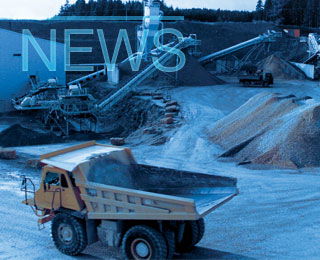The Indian cement industry has witnessed a robust growth of 8.7 per cent in volume terms during the third quarter of current financial year and about 10 per cent rise in dispatches in the first nine months of the year. This, despite a slight drop in exports and excessive rains in south.
"The healthy volume growth, stable cement prices post-monsoons, declining prices of pet coke and imported coal, and the benefits of the value-added tax (VAT) are likely to boost the Q3FY2006, results of cement companies. Further, the fourth quarter outlook is positive with the 12-month rolling capacity utilisation levels at around 92 per cent at present," local analysts note.
Growth potential is supported with a 7-8 per cent growth forecasted for the country’s GDP. "Cement consumption has a strong co-relation with GDP growth. High GDP growth leads to high cement consumption," said an ICRA report. Thus, the sector holds immense potential. Further, India is the world’s second-largest cement market in the world, after China. This is despite its per capita cement consumption at 110 kg, much lower than the world-average of 250 kg and China’s 660 kg. This also leaves immense room for growth in the next decade, said a Mumbai-based analyst.
Improving demand-supply position, coupled with increasing industry concentration, have also had a positive impact on cement prices. In 2005, prices were higher on a year-on-year basis across regions with highest growth of 10 per cent in the Delhi and Kolkata markets.
The impetus to all of this is assumed to have begun with the Union Budget for financial year 2006, laying down thrust to the infrastructure sector via various initiatives such as, an increase in outlay for the National Highway Development Project, on highway development in the North-Eastern region and the Bharat Nirman project.
On the negative side, however, companies are expected to continue facing the problem of rising manufacturing costs, as they do not have control on the external cost elements, such as energy and freight.
